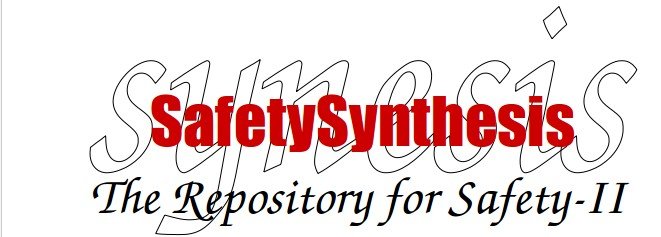(c) Erik Hollnagel, 2020
The confusion about a New View
There has recently (i.e., from around 2015 and onward) been considerable writing and discussion about something referred to as a "new view" of safety. The label "new view" is used as a reference for different attempts to break the stalemate that has characterised safety practices (to say nothing of safety science) for many years. A "new view" may thus refer ideas / concepts/ proposals as diverse (and incompatible) as Safety Differently, HOP, Safety-II, Resilience Engineering, High Reliability Organisations, and Human Factors - either alone or in various combinations. The "new view" has also been used as a Prügelknabe for people who feel compelled to defend their own positions against imaginary foes. This, predictably, does not lead to much progress.
At the beginning of the century there was much discussion about a possible "new view" on "human error". While there were many good reasons to escape from the bias that the concept of "human error" had created, the logical solution would not be a "new view" but rather a "no view". In other words, stop using "human error" as if it was a meaningful term and instead focus on the characteristics of human performance and the role it plays in system performance.
The same kind of argument can be made for a "new view" of safety. It is clear that the traditional ways of looking at safety, including the ways of analysing and managing safety issues, have gone stale. But the answer to that should be a "no view" rather than a "new view" in the sense that safety should not be seen as an issue or a problem in itself but as an aspect or facet of system performance. Some suggestions for how to do that can be found here.
How does "Safety-II" differ from "Safety Differently"?
A frequently asked question is what difference, if any, there is between "Safety-II" and "Safety Differently". The quick answer is that there is no comparison, since the terms refer to two completely different ideas. Here is the explanation why.
- "'Safety differently’ is about relying on people’s expertise, insights and the dignity of work as actually done to improve safety and efficiency. It is about halting or pushing back on the ever-expanding bureaucratization and compliance of work."
- "Safety differently" is therefore about a different way to bring about safety (and efficiency ...) but not about a different understanding of safety. It is still Safety-I, i.e., the reduction and eventually complete elimination of accidents, harm and injury.
"Safety-II" is about a different interpretation of what it means to be safe, namely that it refers to a condition where as much as possible goes well rather than to a condition where the number of accidents and incidents is kept as low as possible. Indeed, as explained in Safety as a homonym, it is actually not about safety at all. Being able to do things well is one aspect of how an organisation functions. Being able to do things efficiently is another. Being sustainable, producing good quality, meeting the expectations of stakeholders and customers are yet other aspects. What "Safety-II" really is about is the unification of activities that an organisation today needs to be able to function as intended and desired. It is about synesis!
In short, "Safety Differently" is about how to provide Safety-I in a more constructive and effective way, while "Safety-II" is not about safety at all but about how to develop and maintain the potentials of an organisation to function under varying conditions so that the number of intended and acceptable outcomes is as high as possible. QED
